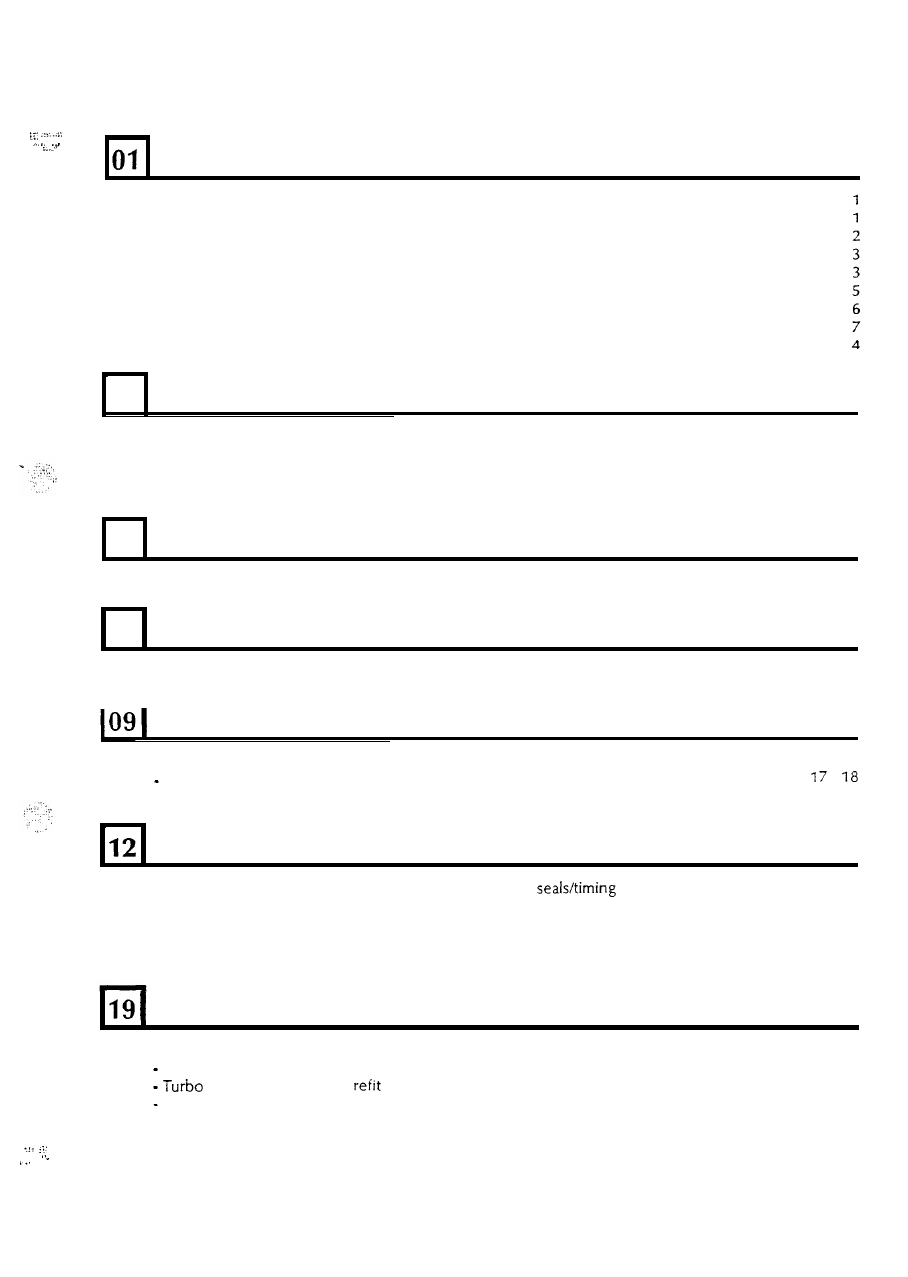Defender 90 / 110 / 130. Manual - part 155

Section
Number
INTRODUCTION
:
CONTENTS
04
Page
G
E
N
E
RA
L
SPECIFICATION DATA
...
. . . . .
-..
......
........
.....
.
05
E
N
GI
N
E TU
NIN
G
DATA
-
General information
-
Poisonous substances
-
Fuel Handling
-
Sealants
-
Disposal
of oil and fluids
-
Abbreviations and symbols
-
Special tools
-
Vehicle identification numbers
-
Copyright
06
TO
R
QUE
WRENCH SETTING
-
Tdi engine data
-
Fuel system
-
Cooling system
-
Clutch
9 - 1 2
9
9
9
ENGINE
RECOMMENED LUBRICANTS, FLUIDS AND CAPACITIES
-
Tdi engine lubricants
Capacities
-
Anti-freeze
17
-
18
-
17
-
18
-
Camshaft
-
remove and refit
-
including front cover
oil
belt and gears
-
Power steering pump bracket
-
remove and
refit
-
Cylinder head
-
remove and refit
-
Camshaft timing belt
-
renew
-
Tdi engine
-
overhaul
30
31
3 2
34
35
FUEL SYSTEM
-
Fuel
injection pump
-
remove and refit
Air cleaner
-
remove and refit
charger- remove and
Intercooler
-
remove and refit
81
84
86
a5
. . .
,
.
_,.
..